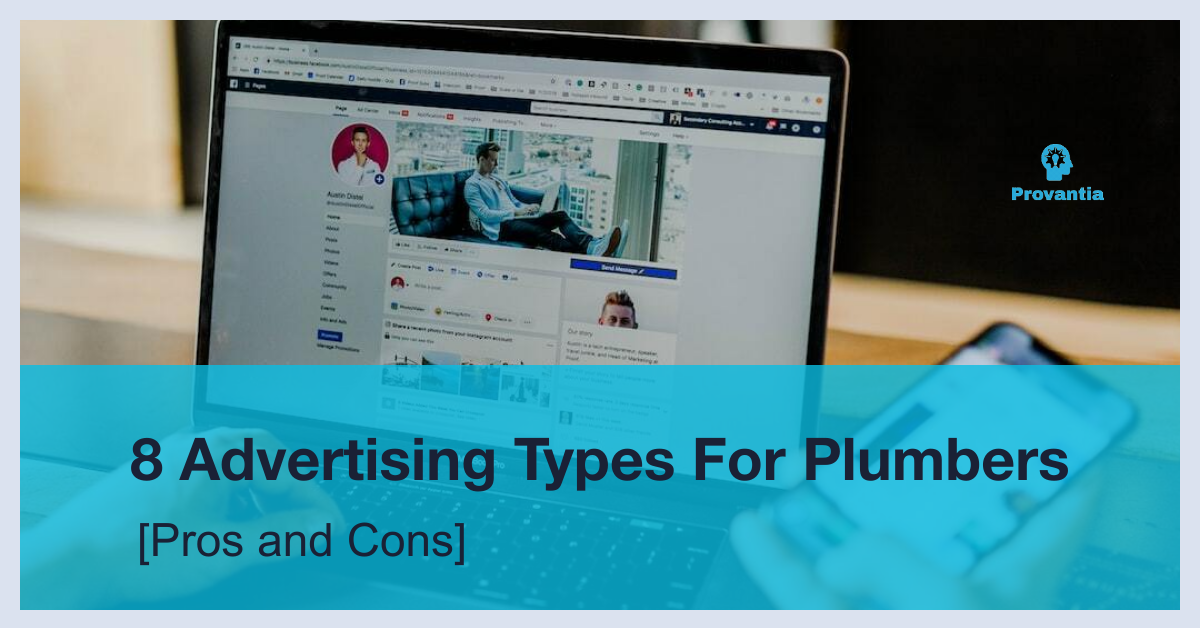Introduction To Advertising For Plumbers
There are plenty of advertising tactics for plumbers. This roundup covers eight of them and their pros and cons. If you are short on time (aren’t we all), jump to Google Ads - which is, for many plumbers, the best advertising tactic if implemented properly.
More...
Marketing vs. Advertising
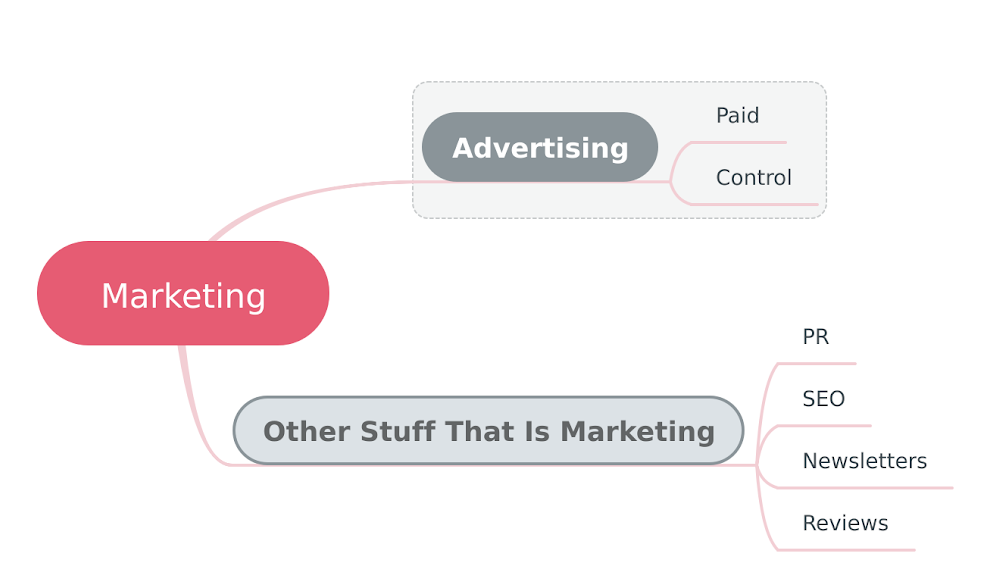
First a word on Advertising. I’m defining it as a subset of Plumber Marketing. It’s normally a non-personal marketing activity where you as the business owner has control over:
- The costs
- The impressions or visibility
- The pages, links or phone numbers your prospective customers are connected to
Goals Of Advertising
As a plumbing business owner, you should not just be aiming for getting better known in the area (local awareness) only. Frankly, you can’t afford it - that’s for big corporations.
You should be thinking more like a direct marketer. Your advertising should do three things (in order of importance):
- Generate leads (phone calls, contacts).
- Position your business as better and different from your competitors.
- Build awareness of your business and brand.
A corporate type plumber marketing campaign that builds awareness and delivers no/few leads is a waste of money for you. On the other side of the coin, a campaign that does not generate much awareness but still brings in good leads at a reasonable cost can keep your business rolling and growing.
That’s what you need to aim for.
Before You Start
You're probably action orientated so you want to get moving with your advertising when you decide to do it. Yet it's good to take stock before you start and consider this important approach from Dan Kennedy (an old school marketing guru):
- Identify your ideal customer and how to reach them.
- Create a compelling message your prospects find hard to resist.
Who Are You Advertising To?
Think about your ideal potential customer. Write down things like the geographic area you want to target and some demographics of the people you want to target such as age, household size, occupation & income, gender and age of the home.
There’s a big difference between targeting working mothers in a high-income area with older homes vs stay at home parents in a newly developed suburb.
Also, consider some of the attitudes and approaches people have to plumbing. For example, you probably don't want to be advertising your Plumbing Services to DIY enthusiasts.
To help you do this it's a good idea to follow these steps to define your target market and message more accurately. Yes, it’s tedious; but it’s the research and planning that sorts the successful advertisers from the also wasted money people!
What Does Success Look Like?
How will you know if your advertising has worked and what are you trying to achieve? Is it OK if it generates only 10 leads? What about if all the work is for dripping tap repairs?
Crafting Your Compelling Message
There are some powerful elements to help your advertising cut through the noise, and get responses from your target market. Some of these things are:
- A memorable brand or a business name. It's easier for people to remember names like Plumbing Detectives or Plumbing Doctor than it is to remember WRK Plumbing for example.
- Even a local business needs a clear point of difference. If you are a plumbing business that specialises in everything (eg we specialise in domestic and commercial) then it's hard for your ads to cut through.
- Think about it this way if you're going to get married ...would you rather have a photographer or a wedding photographer take the photographs? If you can communicate a clear point of difference, people are more likely to respond to your ad when they hear it because they understand that you are the solution to their problem.
- Social proof in the form of online reviews and testimonials. There's too much BS and overclaim advertising around these days. People don't trust it and they don't trust the messages that businesses send. What they do trust is online reviews. 9 in 10 people trust online reviews as much as referrals from friends and family. Having a good lot of online reviews will significantly and boost the conversion from your advertising - by as much as 200%.
Local SEO vs Social Media Marketing vs Plumber Advertising
This article is not about Local SEO or Social Media Marketing. Search engine optimsation is a form of plumber marketing but it is not advertising. The same holds true for social media marketing. These two are about earned traffic. Advertising is about paid traffic.
You can read more about our local SEO and social media marketing service for plumbers here. It's a very cost-effective SEO strategy.
Google Search Ads
If you own a plumbing company and need an effective way to market your services, Google search ads is a great choice. It can help you hone in on your best prospects, be very cost-effective, and get your marketing campaign going.
What It Is
Google Ads is a pay per click advertising platform where you bid on keyword searches, create an ad and pay every time somebody clicks on your ad.
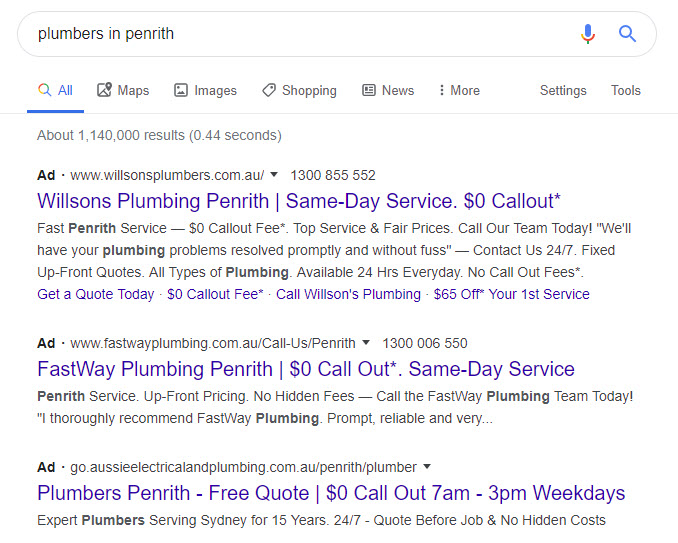
There are several major benefits of Google search ads for plumbers. There are also some signficant issues These are:
Despite the cons of Google search ads, the benefits still outweigh the challenges. According to this Google report businesses who use Google Ads make an average of $2 for every $1 spent. And if your business is good at upsell and retention of customers, then paying more than you make from the first customer interaction is still a viable way of getting customers.
I suggest you get the help of a Google Ads professional if you have trouble making campaigns work for you or you simply do not have the time to build and manage the campaigns.
What you need to run Google Ads
To run Google ads effectively in this very competitive environment, you need the following:
- A budget of $1,000+ a month for at least 3 months to find what works for your business and target customers.
- Your own Google Ads account and Google Analytics set up on your website
- A good, fast converting website, or specific landing pages for each service you are advertising.
- Phone call tracking so you know what keywords and ads generate calls and customers.
- Contact us or enquiry tracking.
- Ideally, you would want to have a contact management system to follow up and nurture new customers and leads you have paid for but didn't convert.
Remarketing or Retargeting Via Facebook or Google
In a perfect world, people would land on your website, have a look around and make a purchasing decision in under 2 minutes.
Sounds pretty good, doesn't it?
For most businesses, this is not the case. In fact, 95% or more of their website visitors leave without contacting the business or making a purchase. It’s not you or your site, it’s just how it is.
How Retargeting Works
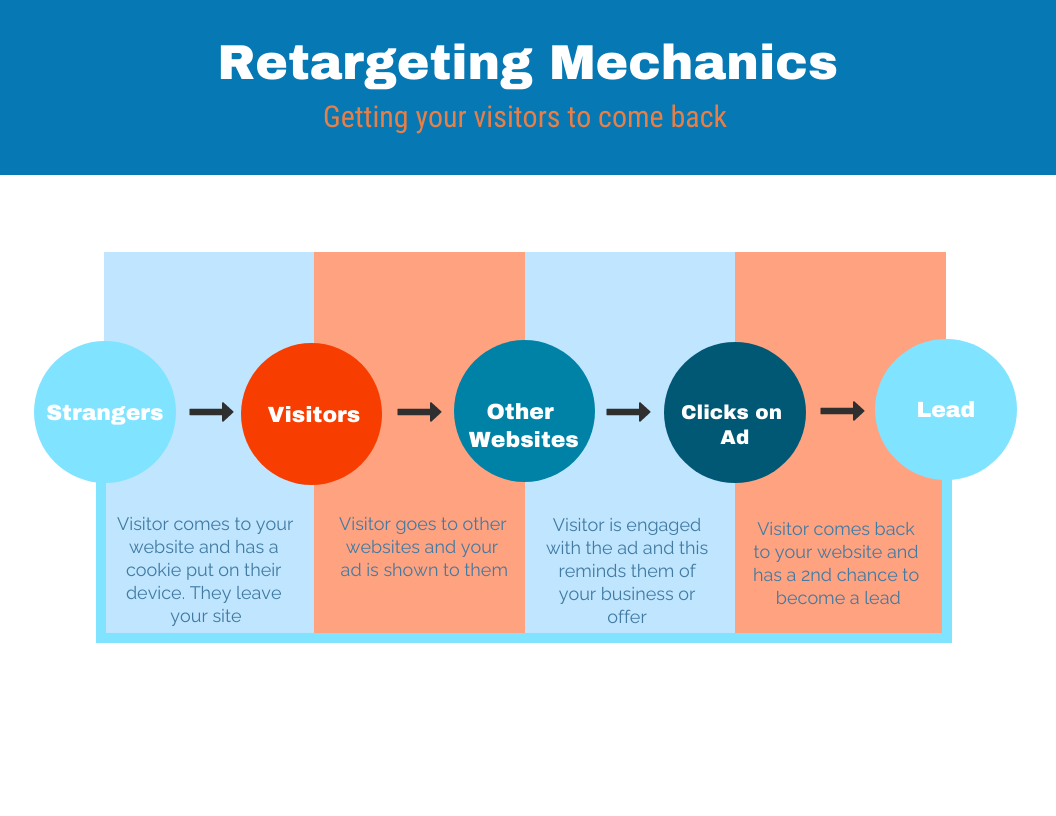
One of the best ways to convert leads is by remarketing, specifically on Facebook. Read on to learn why you need to implement remarketing ads into your marketing strategy.
What is Facebook Retargeting?
When someone visits your website or lands on your social media channel, a pixel is added onto the browser. This pixel then allows you to follow users online and provides them with gentle reminders of your brand. But effective Facebook retargeting involves a solid strategy.
There are several major benefits of Facebook retargeting ads for plumbers. There are also some signficant issues These are:
There are many good reasons to use Facebook retargeting. Nine in 10 potential customers will leave your website without contacting you or becoming a business.
Retargeting gets them back and it's very likely to be your highest return on investment marketing campaign.
Facebook's smaller audience size requirements make it a no brainer for all plumbers.
What you need
To run Facebook retargeting Ads you will need:
- A Facebook page for your business.
- A Facebook ads account.
- The Facebook tracking pixel installed in the code of your website with the relevant variations (for example new customer tracking) in place.
- The target audiences correctly defined.
- Facebook ad campaign(s) targeted at the various website visitors audiences.
- Ideally, you would also set up a custom audience for new customers and exclude these people from the remarketing to avoid annoying them and wasting money advertising to people to become customers when they already are.
Google Remarketing
What It Is
Remarketing is Google’s name for what we referred to above as retargeting. It’s a way to connect with people who have previously visited your plumbing site. It works in a similar way to Facebook retargeting.
Here’s an example of some Google Display ads on speedtest.net - a good site to go and see who’s remarketing to you. Only # 2 is a remarketing ad being shown because I’ve been to the Xero website recently.
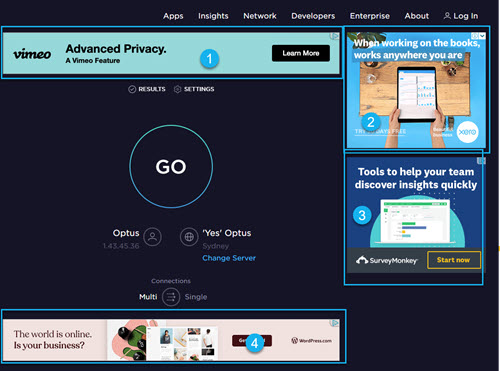
There are several major benefits of Google remarketing ads for plumbers. There are also some signficant issues These are:
For most plumbers with websites that get less than 2,000 visitors a month, Google remarketing is not a viable option. You are better off using Facebook retargeting.
Even higher traffic websites will have trouble delivering segmented ads. For example, if you want to communication your bathroom plumbing service to only visitors who have been to your bathroom plumbing page, you will need 1,000 in that specific audience.
You are mostly restricted to brand awareness reminder advertising. It might work for you and is worth testing
What you need
To run remarketing on Google you will need:
- A Google Ads account.
- Google remarketing code installed on your website.
- A remarketing campaign with ads for specific messages.
- A way of automatically getting the leads into a CRM or email marketing system so you can follow up and nurture your leads.
- Ideally, you would also set up a custom audience for new customers and exclude these people from your marketing to avoid annoying them and wasting money advertising to people to become customers when they already are.
Google Display Ads
What Are Google Display Ads
Google display ads are the visual ads that you see why you're reading an article on a blog newspaper site or checking the weather forecast when watching a video on YouTube.
Google display ads are served on what is called the Google Display Network. The network consists of about 2 million websites and apps and according to Google reaches about 90% of Internet users.
Here’s a couple of display ads that show for me on the Weather Channel - both are relevant to me and my business (But I already use SEMRUSH - so they are kinda wasting time/money/space for both of us!).

The Google Display Network is a little bit like TV or radio advertising in that it interrupts people when they're doing something else to show your ads. They may or may not pay attention.
If you are operating in an expensive and competitive market for Google Search ads, you should seriously test out Google Display ads as a lead generation method.
It will work better if you combine it with Facebook and/or Google retargeting.
And get the help of a Google Ads professional if you have trouble making campaigns work for you or you simply do not have the time to build and manage a campaign.
What you need to run Google Display Ads
In order to set up a Google display campaign, you basically need the following:
- A Google ads account where you can set up the campaigns and upload the ads.
- Appropriate landing pages and lead magnets to capture potential future customers email addresses.
- Marketing automation to follow-up on engagement and nurturing with leads to turn them into potential customers.
- Google Analytics set up on your website so you can track everything properly.
Facebook Lead Ads
What are Facebook Lead Ads?
Facebook lead ads are ads connected directly to a lead form within Facebook. This approach allows you to capture prospective customer details while also offering leads a chance to connect via newsletters, contests and even demo requests. When a lead clicks on a lead ad, a pre-populated form pops up.
The lead inputs their other contact information, giving brands the opportunity to lead them through the marketing funnel.
There are several major benefits of Facebook Lead Ads for plumbers. There are a few wrinkles you need to understand before you rush headlong into what looks like an amazing ad opportunity. These are:
The biggest problem here is that you are essentially going into a cafe and handing your brochure to everyone in the cafe. That's not going to go well, because most people don't have a plumbing problem at the time. And people in cafes will be more polite!
When it comes to successfully using lead ads, you need to know who you're targeting and why.
Learn how to do A/B testing to optimise your lead ads prior to settling on one final ad. And, don't be afraid to think outside the box and target consumers who you haven't in the past. The results just might surprise you.
What you need to run Facebook Lead Ads
To run Facebook remarketing Ads you will need:
- A Facebook page for your business
- A Facebook ads account
- The Facebook tracking pixel installed in the code of your website
- A Facebook ad campaign(s) targeted at a focused group or groups of prospective customers
- A way of automatically getting the leads into a CRM or email marketing system so you can follow up and nurture your leads
Ideally, you would also set up a custom audience for new customers and exclude these people from the marketing to avoid annoying them and wasting money advertising to people to become customers when they already are.
Local Newspaper Ads
Print advertising in newspapers or magazines is still a significant form of advertising communication for plumbers servicing a specific area.
Below are some of the more specific pros and cons of placing a traditional ad for your business and your company’s service in your local paper.
As a direct marketer, I've never been a fan of marketing that is hard to track. My recommendtion is only get into this if you can track it properly with specific call tracking numbers and landing pages.
And keep doing it for a while so you know that it is or is not producing the right leads at an acceptable cost - so allocate some budget to it.
What you need to run local newspaper ads
You really don’t need much if you are going to do local newspaper advertising. It just takes a phone call and they will often do it all for you. If you want to do it will you will need the following:
- A clear offer you want to make residents.
- A specific phone number that is different from your standard phone number. This allows you to know exactly how many calls you go from your ad. You can set it up to forward to your normal number.
- A tracking link or tracking domain. Instead of listing your standard website address, you can use another version of it. For example, if your standard website address is bobsplumber.com.au you can use bobsplumber.net.au (provided you own it) and then you can count the traffic to that website (and redirect it to your .com.au site.). Alternatively, you can use bobsplumber.com.au/leader (eg the name of your paper). Just be aware that people at times will just type in the main address and you lose info.
Leaflet Distributions
In this area, we are referring to activities where you pass out service brochures, leaflet drops and promotions to homes, apartment and office complexes. Perhaps this is a leaflet drop in a suburb or leaving service brochures in the mailbox of local homeowners near where you do a job.
Here's some advice about leaflet marketing.
Like every other type of advertising, leaflet drops have pros and cons for plumbers.
Local leaflet drops are a bit like Facebook lead ads. You are essentially spraying your message to everyone in the area in the hope that some of them will have a plumbing problem (and no existing plumber relationship) at the time the leaflet hits.
What works depends on your offer and messaging at the time, and it can be hard to get profitable leads. For example, free plumbing inspections are going to get more leads than an offer to clear a blocked drain.
You would also need to set up tracking properly to know if it's working or not and give it some time.
What you need to run Leaflet Drops
As noted, leaflet distributions are easy. All you need is:
- A design and message that you want to get across
- A supplier to put the design together, print the leaflets and distribute them
- A tracking number and or a tracking link for people to contact you from the leaflet.
Local Sponsorships
Local sponsorships are a great way to get your name and business out into your community by working with local organisations, events, and sports teams.
They often also have a marketing and SEO advantage as mentioned below;
There are several major benefits of local sponsorships for plumbers. There are also some potential problems which I've outlined below:
If you think it out well and sponsor organisations where your target market is, this is a very good marketing tactic that can get you leads and boost your local SEO at the same time.
It's a marketing tactic every plumber should seriously consider because of these dual benefits. Give preferance to organisations that will link to your website.
What you need to run Local Sponsorships
Like leaflet drops, you don’t need much for local sponsorships. Pretty much all you will need is:
- Time to find suitable opportunities and to negotiate a deal with them.
- Offers to make to the members of the club or event participants.
- Collateral like your brand materials, logos and relevant copy, images and social media links and posts.
Tracking Your Activity
You want your plumbing marketing activity to be profitable and beneficial. And you want to be confident that you or someone in your business understands the key dynamics like; the number of leads and customers attracted, the value of those leads and customers, cost per acquisition for both leads (who may become customers) and customers.
So you need to be able to track stuff properly. Yet I often see letterbox drops like this with three ways of responding. And no website address - the most likely place customers would go to check out the business before they call so there’s no way to see if there was increase online activity from the leaflet drop.

Tracking Digital Marketing
Normally digital marketing is easier to track through the whole process. You can do this using:
- Google analytics, tracking links and UTM tracking codes
- Tracking numbers connected to Google Ads, website landing pages and Google Analytics.
- A Contact Relationship Management system (not your phone contacts!) to track leads to sales and nurture leads to sales.
Tracking Offline Marketing Activity
Tracking offline marketing is more difficult and more prone to error. Here are some of the things you do are:
Use special tracking phone numbers that only apply to that activity. You can still direct that number to your normal number, but it allows you to know where that call came from and how many calls generated that marketing tactic generated.
Use alternative domain names or landing pages. For example, have a page called /offerA, for example, on your main website and associate that page with the specific marketing tactic. Or use a .com, or .net.au version of your domain name and put the offer up there. Just make sure these pages or domains are excluded from Google Search with the “no-index” tag so people don’t find them outside of the specific marketing tactic.
Alternatively, tell them what to search for. We’ve all seen it on TV where major advertisers finish a TV ad with for example “search for Landrover Runout Deals”. You can do this too. Just pick a relevant phrase that’s not hard to rank in Google for eg [Business Name] + [Area] + [Deal name] and optimise the page for that
Use manual tracking. Ask the caller or prospective customer where they heard of you. Use offers or codes that are only used for that specific marketing tactic and ask about codes or get them to provide you with the coupon or leaflet to get the offer. Lastly, you can offer a ‘thank you’ gift for referrals, to give the referrer or a new customer a reason to tell you about the referral.
In all cases, you should log the details into your CRM along with the source of the lead or customer. That way you can go back later and see how much business you got from the particular activity.
Once you have a tracking method in place, you have to keep up with it!
Start With One Method And Perfect It So It's Profitable
I’ve provided the pros and cons of eight plumber advertising tactics. My recommendation now is to pick one and work with it until you perfect it so it delivers profitable clients.
As a plumber you are in a competitive market, there are other plumbers trying to grab your prospective customers. And they are often helped by digital marketing agencies like ours.
This means you can’t afford to start a tactic and get distracted by work or another new tactic because you are going to get eaten for lunch by the experts. And who’s got the budget for that?
80/20 Perfection Of One Marketing Tactic
Far better to run with one tactic for six months and learn what works and what does not and get to a stage where you have kept all of the good things that work and have eliminated all of the bad things that don’t work for your business (but might for others).
But don’t keep digging to the nth degree. If you are happy with the cost of getting a new lead then roll with that and move to another tactic.
Meantime if you have any questions or thoughts please add them to the comments below and I’ll be happy to respond. Or just contact us.

